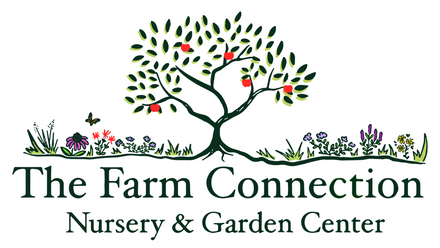Plum, Chickasaw, Bare Root
Early Blooms & Edible Summer Fruits
Plum, Chickasaw, Bare Root - Bare Root / 6-18" Seedling is backordered and will ship as soon as it is back in stock.
Couldn't load pickup availability
Delivery and Shipping
Delivery and Shipping
Make sure to thoroughly review our entire "Shipping, Returns, Refunds, and Our Guarantee" page for all relevant details about ordering from our store.
Making a purchase from our store constitutes an agreement to all the conditions outlined in those policies.
We appreciate your support and look forward to being your favorite plant provider!
Subscribe to our newsletter
Sign up for exclusive offers.
Chickasaw Plum (Prunus angustifolia)
The Chickasaw Plum is a small, native tree or large shrub known for its early spring blossoms, wildlife value, and edible fruits. This resilient and versatile species can be found in natural thickets, meadows, and open woodlands across the southeastern United States. Its fragrant white flowers bloom profusely in late winter to early spring, attracting pollinators, while its small, tart fruits ripen in summer, providing food for birds, mammals, and humans alike. The Chickasaw Plum is a beautiful addition to native gardens, edible landscapes, or as part of a fruit tree guild.
Key Characteristics
-
Early Spring Blooms for Pollinators
Chickasaw Plum bursts into a stunning display of fragrant, white blossoms in late winter to early spring (February to March, depending on the region), long before its leaves emerge. These blooms attract a wide range of pollinators, including bees and butterflies, making it an important early-season nectar source. -
Wildlife-Friendly and Ecological Benefits
The small, red to yellow fruits ripen in summer and are a favorite of birds and small mammals, such as squirrels and raccoons. Chickasaw Plum thickets also provide valuable nesting and shelter sites for birds like cardinals and quail, while its dense branches serve as excellent wildlife habitat. -
Edible, Tart Fruits for Culinary Use
The tart, juicy fruits of the Chickasaw Plum are small but highly versatile. They can be eaten fresh, used in jams, jellies, and pies, or even fermented into wine. While slightly astringent when raw, they develop a sweeter flavor when fully ripe. -
Thicket-Forming and Adaptable
This multi-stemmed tree naturally forms thickets through root suckering, making it ideal for erosion control, windbreaks, or natural hedgerows. It thrives in a variety of soils, from sandy loam to clay, and is highly drought-tolerant once established. -
Versatile Landscape Uses
Chickasaw Plum can be used as a specimen tree, in edible landscapes, or as part of a food forest. Its ability to form thickets makes it an excellent choice for wildlife corridors, silvopasture systems, and naturalized areas. Its size and structure make it well-suited for understory planting or as a transition layer between trees and open ground.
Product Details
- Native Range: Southeastern United States
- Plant Life Cycle: Perennial, Deciduous Tree/Shrub
- Sun Requirements: Full sun to part shade
- Soil Requirements: Dry to medium soils; tolerates sandy, well-drained, or clay soils
- Mature Height: 6-20 feet
- Bloom Time: Late winter to early spring (February to March)
- Bloom Color: White
- Fruit Qualities: Small, red to yellow, tart; ripens in summer (June to August)
- Fruit Uses: Fresh eating, jams, jellies, pies, wine
- USDA Hardiness Zones: 5-9
Chickasaw Plum is a charming native tree that brings beauty, ecological benefits, and edible fruit to your landscape. Whether you're planting for pollinators, wildlife, or culinary enjoyment, this resilient tree is a versatile and rewarding choice for regenerative and naturalized landscapes.
-
Sun RequirementsFull Sun, Part Sun/Shade
-
Soil RequirementsDry, Medium
-
Bloom ColorWhite
-
Bloom TimeFebruary, March
-
USDA Hardiness ZonesZone 5, Zone 6, Zone 7, Zone 8, Zone 9+
Payment & Security
Payment methods
Your payment information is processed securely. We do not store credit card details nor have access to your credit card information.




